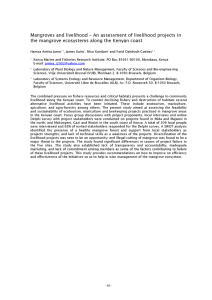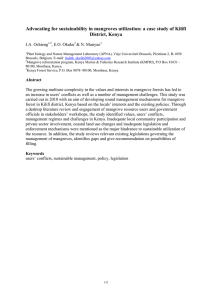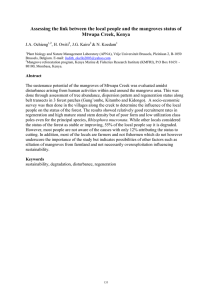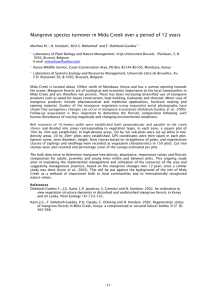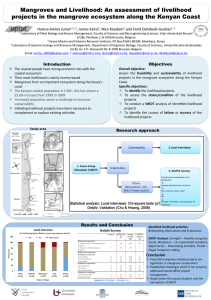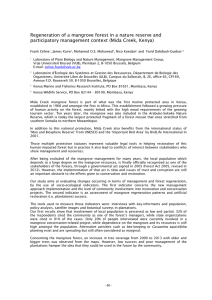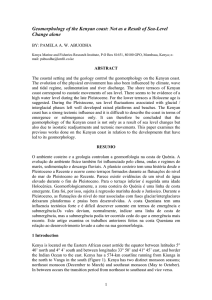Mangroves and livelihood – An assessment of livelihood projects in
advertisement
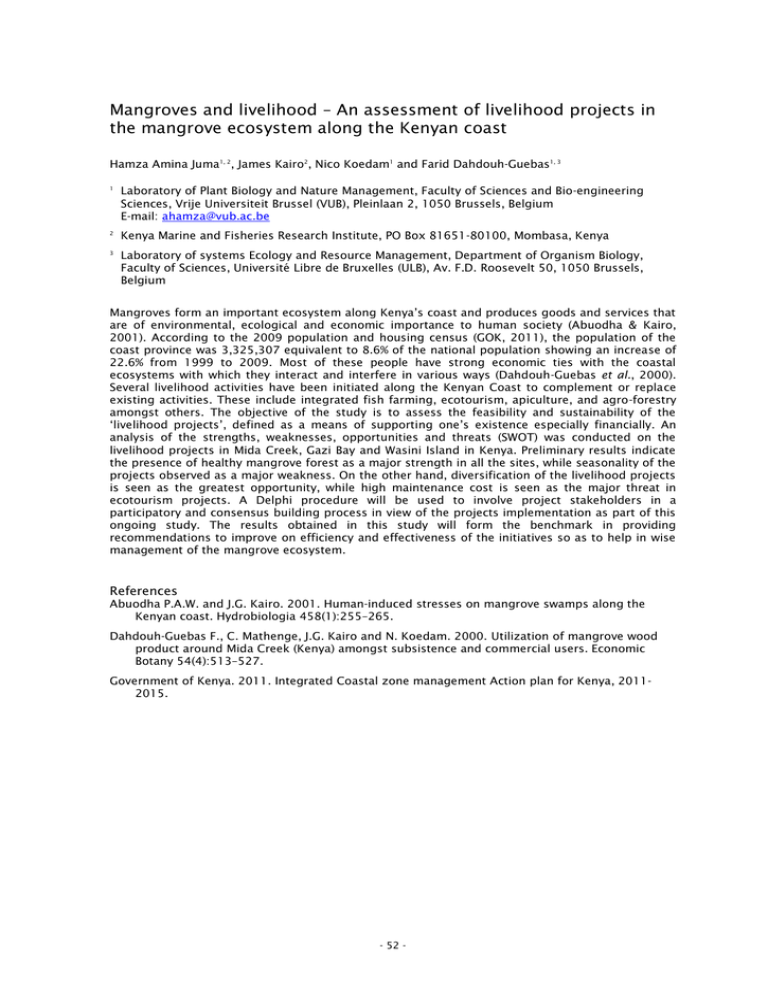
Mangroves and livelihood – An assessment of livelihood projects in the mangrove ecosystem along the Kenyan coast Hamza Amina Juma1, 2, James Kairo2, Nico Koedam1 and Farid Dahdouh-Guebas1, 3 1 Laboratory of Plant Biology and Nature Management, Faculty of Sciences and Bio-engineering Sciences, Vrije Universiteit Brussel (VUB), Pleinlaan 2, 1050 Brussels, Belgium E-mail: ahamza@vub.ac.be 2 Kenya Marine and Fisheries Research Institute, PO Box 81651-80100, Mombasa, Kenya 3 Laboratory of systems Ecology and Resource Management, Department of Organism Biology, Faculty of Sciences, Université Libre de Bruxelles (ULB), Av. F.D. Roosevelt 50, 1050 Brussels, Belgium Mangroves form an important ecosystem along Kenya’s coast and produces goods and services that are of environmental, ecological and economic importance to human society (Abuodha & Kairo, 2001). According to the 2009 population and housing census (GOK, 2011), the population of the coast province was 3,325,307 equivalent to 8.6% of the national population showing an increase of 22.6% from 1999 to 2009. Most of these people have strong economic ties with the coastal ecosystems with which they interact and interfere in various ways (Dahdouh-Guebas et al., 2000). Several livelihood activities have been initiated along the Kenyan Coast to complement or replace existing activities. These include integrated fish farming, ecotourism, apiculture, and agro-forestry amongst others. The objective of the study is to assess the feasibility and sustainability of the ‘livelihood projects’, defined as a means of supporting one’s existence especially financially. An analysis of the strengths, weaknesses, opportunities and threats (SWOT) was conducted on the livelihood projects in Mida Creek, Gazi Bay and Wasini Island in Kenya. Preliminary results indicate the presence of healthy mangrove forest as a major strength in all the sites, while seasonality of the projects observed as a major weakness. On the other hand, diversification of the livelihood projects is seen as the greatest opportunity, while high maintenance cost is seen as the major threat in ecotourism projects. A Delphi procedure will be used to involve project stakeholders in a participatory and consensus building process in view of the projects implementation as part of this ongoing study. The results obtained in this study will form the benchmark in providing recommendations to improve on efficiency and effectiveness of the initiatives so as to help in wise management of the mangrove ecosystem. References Abuodha P.A.W. and J.G. Kairo. 2001. Human-induced stresses on mangrove swamps along the Kenyan coast. Hydrobiologia 458(1):255–265. Dahdouh-Guebas F., C. Mathenge, J.G. Kairo and N. Koedam. 2000. Utilization of mangrove wood product around Mida Creek (Kenya) amongst subsistence and commercial users. Economic Botany 54(4):513–527. Government of Kenya. 2011. Integrated Coastal zone management Action plan for Kenya, 20112015. - 52 -
